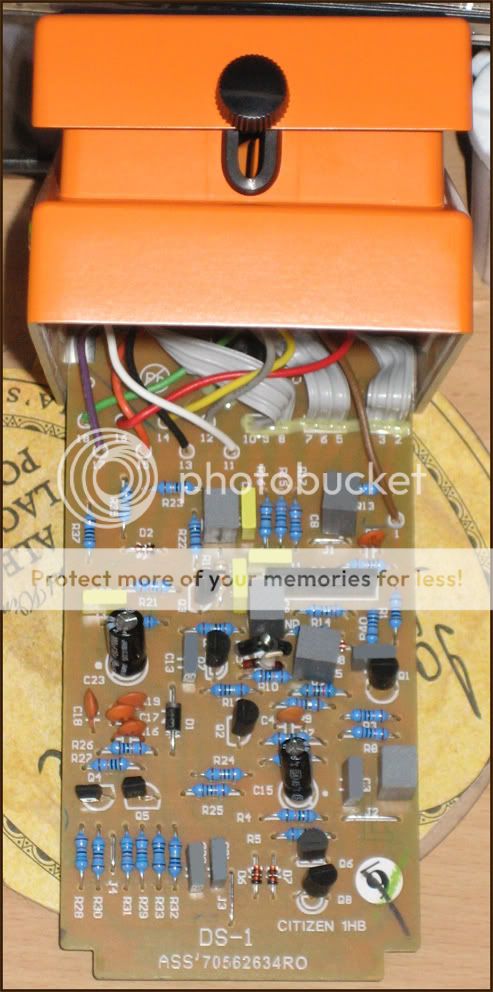Boss DS1 Distortion Pedal Mod Page
this Blog consists of information on modifying a Boss DS1 Distortion effects pedal to sound better than the original.
Monday, July 26, 2010
A Final Change
Tuesday, July 20, 2010
One more mod
The AMZ DS1 Fat two-resistor mod
It’s a simple mod that really changes the way the pedal sounds by taking away the amount of distortion available, so the pedal goes from extreme to moderate. This mod also increases bass response a fair bit and its really noticeable. For my likings it brings the gain down two much, however the pedal does sound really different and it’s more dynamic and less compressed. As the mod states, you get more of a general distorted sound and much less of the fizzy fuzz territory sound from the stock DS1.
The mod gives a more desirable & defined distorted tone but I would like it to have more distortion available. Being such an easy mod, it’s worth a shot and can be used in conjunction with other mods, as most of the DS1 mods out there do not require you to change the same two resistors as the AMZ mod does.
After playing around with this mod for a day or so I change it back to the stock values as the reduction in available distortion was to low for my need.
If you use this mod and like it please give credit to Jack on his website as he give us an excellent source for mods, schematics & general DIY Pedal information. You can find his website and direct link to the mod at the links below,
- Muzique.com
- AMZ DS1 Fat Mod
The Fat mod is simply R6 = 150k & R9 = 1k
Cover Track with the Modern Mod & JCM Mod,
When I did the first mod it to the Wampler Modern Distortion Tone Machine I wanted to record a cover song to see how it would perform in a musical situation. At the time I was giving guitar lessons to a friend of mine teaching him how to play Metallica’s ‘Enter Sandman’. I decided to record the rhythm guitar parts with my newly modded DS1, however I had the idea of using a different mod for the lead guitar parts of the song. After I recorded the rhythm guitar a week or so later I started the Marshall JCM mod, once I had change the DS1 to JCM spec’s I finished learning the lead guitar parts of enter sandman and started recording.
With each guitar part the only extra effects I used was a bit of reverb & a standard crybaby CGB-95 wah pedal for the solos. Therefore, we have; Rhythm Guitar = Modern Mod & Lead Guitar = Marshall JCM mod.
Below is a video of the recording, in a band situation each guitar part should be more noticeable tone wise, however, with the original track playing in the background there really isn’t a dramatic difference at all, having the original tracks guitars, drum, bass & vocals in the mix, hearing the subtle differences between the mods isn’t that apparent. However, you can still hear a difference if you listen closely.




